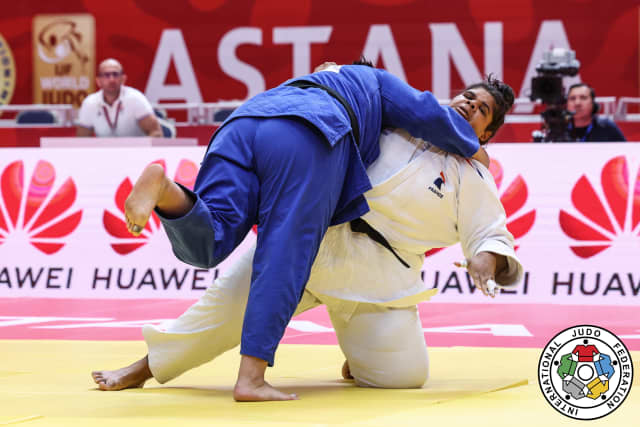“This has been an opportunity to see some new faces, some new judoka, giving us the information that some federations are already starting to prepare the next Olympic cycle, for 2028. This event has been organised in a very positive way and shows us that even in an Olympic qualification period there is still a place for young athletes to arrive in the final block and challenge the top players for the medals.
We have seen a great deal of focus from athletes in the opening seconds of fights with a good number of contests finishing in those opening seconds, just as we saw with +78kg number one seed Lea Fontaine (FRA) being thrown in 4 seconds by Ramazanova (KAZ)."
Transition has most often been used in the traditional way, with throws moving into groundwork from same athlete but we have also had some athletes getting thrown but then turning their opponent and taking the win on the ground, from being under the most pressure. They aren’t giving up, showing a very positive attitude, knowing that the contests are not over until the criteria for a win have been met fully.
Golden score has still been a big challenge for some of the athletes who did not have enough experience of how to manage their fights to stop the extension of the fight. Learning how to use energy efficiently is essential. The excessive expenditure of energy in a long golden score contest affects the contests that follow.
There were surprise numbers of ippon from within the last few seconds of fights when athletes were behind on the scoreboard. This again shows a good attitude towards the search for ippon is being kept throughout. We have seen many of those contests here in Astana and it is a really great sign; the necessary emphasis is understood by the majority.

Throughout the three days of competition we had around 15 hansoku-make and half of those were for using the head where tori, in their intention to throw, was using the head straight to the mat. This is a matter that can of course be changed in training and should be, by using crash mats in nage-komi and performing throws with rotation that are executed 20cm or more above the mat. The aspect of safety is important on the WJT, which is followed and copied by our young judoka worldwide. It is our duty to eliminate any kind of potential injuries for both tori and uke, wherever possible.”
The weekend has come to an end and the next technical analysis will come from a few thousand kilometres east, as Mongolia hosts the next grand slam of the World Judo Tour. All action, results and statistics can be followed via JudoTV.com.


